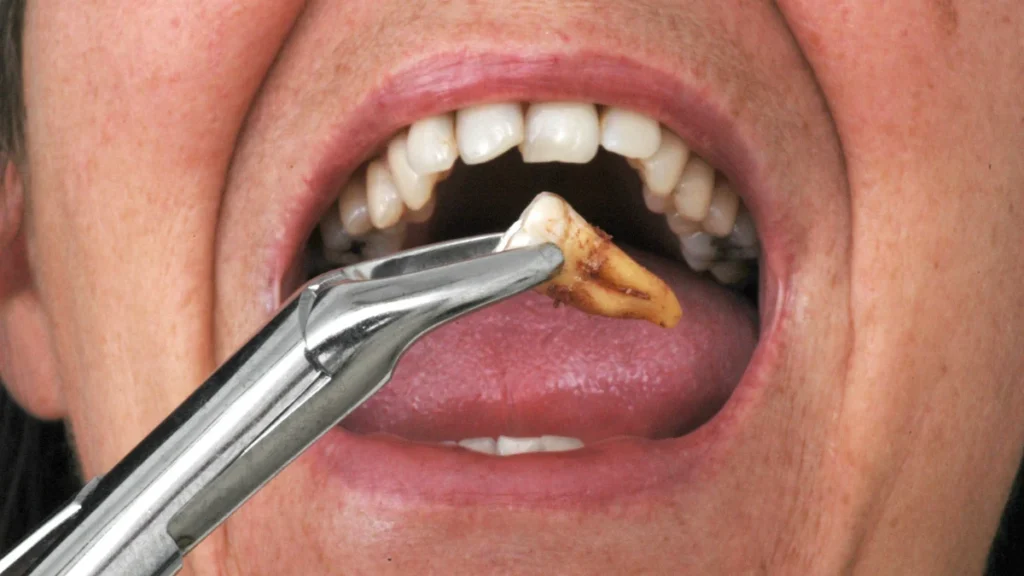
Tooth extraction is a dental procedure where a tooth is removed from its socket in the jawbone. Dentists or oral surgeons typically perform it when a tooth is damaged beyond repair, severely decayed, or causing crowding or infection.
Reasons for Tooth Extraction
- Severe tooth decay or infection
- Gum disease leading to loose teeth
- Impacted teeth (e.g., wisdom teeth that don’t fully erupt)
- Crowded mouth (often before orthodontic treatment)
- Broken or fractured teeth that can’t be restored
- Dental trauma
🔹 Types of Tooth Extraction
- Simple Extraction:
- For visible teeth.
- Performed under local anesthesia.
- The tooth is loosened and pulled out with dental instruments.
- Surgical Extraction:
- For impacted or broken teeth below the gumline.
- Often requires an incision in the gum and sometimes removal of bone.
- Done under local anesthesia, sometimes with sedation.
🔹 What to Expect
- Procedure typically takes 20–40 minutes.
- You’ll receive anesthesia to numb the area.
- After removal, a gauze pad is placed to help stop bleeding.
- You’ll be given aftercare instructions to support healing.
🔹 Recovery & Aftercare
- Bite on gauze to control bleeding (30–60 minutes).
- Apply ice packs to reduce swelling.
- Eat soft foods and avoid hot drinks for 24–48 hours.
- Avoid smoking, spitting, or using straws for at least 24 hours to prevent dry socket.
- Take prescribed painkillers or antibiotics, if given.
🔹 Potential Risks or Complications
- Dry socket (painful condition if the blood clot is dislodged)
- Infection
- Bleeding that won’t stop
- Nerve injury (rare, usually with wisdom teeth)

